 |
| Russell Hoban onstage |
Last weekend Russell Hoban made a rare public appearance - an onstage interview for Map Marathon: Maps for the 21st Century, a multimedia event featuring dozens of writers, artists and academics hosted by the Serpentine Gallery at the Royal Geographical Society, London. During the interview Russell talked about the "mystique" of maps and the part they have played in his work, and his new novel Angelica Lost and Found. The SA4QE event and The Kraken Hoban community also got a mention. A number of SA4QE/Kraken stalwarts were in attendance including Anthony Davis, who takes us back there now. A transcript of the interview is included below.
PHOTOGRAPHS BY PETER MORRISON
Travel difficulties / delays apart, and despite being without a MAP at the crucial moment requiring a circumnavigation of the Royal Albert Hall, all turned to the good! Peering into the dark of the RGS's lecture theatre soon revealed the features of some well-known Krakenites, and I even had a seat reserved where I could witness
Gilbert and George, rather tangentially, reading their 'mapping' of postcards that, to their eye, featured the Union Flag (they know so much better than to call it the Union Jack!), i.e. a list, in alphabetical order, of the largely arbitrary - and not without a comic bent - titles that they had given to these cards whose collection they had so dutifully curated; likewise their mapping of 'telephone [box] cards', but only those that - to their mind - left something to the imagination.
For me, seeing these icons of the gay art world and hearing them talk about their maps of county towns and seaside resorts was a very fitting prelude to Russ's own session, and one which made the whole protracted jurney (sure some Riddley?) quite worthwhile, as, of course, did seeing Russ again and a no. of Hobanites, old and new.
Eleanor Bron started the session with a lovely reading from the start of
The Lion of Boaz-Jachin and Jachin-Boaz, although I really don't know how she kept her composure with the noise and bustle of people re-taking their seats, and generally milling around the lecture-space as if no thought-out and sensitive rendition were being given. [The reading is available from
Thoughtcat as a 3mb mp4 audio file; you will need to turn up the volume as it is quite soft.] Russ was then helped, with the support of a clearly much-needed arm (that of his would-be interviewer and host, Hans Ulrich Obrist), down, across and up to and into one of the padded chairs to the right of the lectern: his physical frailty was patent, and I'm sure that everyone watching (not just those who knew him) must have felt for the effort that he was making just to be present at this event.
 |
| Hans Ulrich Obrist (l) with Russell Hoban |
So much was Russ enjoying being there, though, that it was evident not only in his mental liveliness, but also in his quirkily engaging quality and character of speech, which were immediately to the fore in his first answer. Coupled with these was the comfortable way in which he was clearly sensing the room and its occupants, as the professional communicator that he is. (In fact, he could be seen, once settled into his chair, already putting out what one could call tentacles or feelers for this purpose.)
After first answering a question about
Lion that arose from the reading, Russ had politely, but definitely, to decline to address the second one put to him [of whether he thought that the "master map" that Jachin-Boaz wanted to make for his son to "show him where to find whatever he might wish to look for" was a kind of precursor to the Internet; "Can I dodge that question?" Hoban responded, to the delight of much of the audience]. I felt this exchange spoke volumes about the lack of preparation on the part of the interviewer, in establishing a rapport with Russ: I am guessing that, otherwise, he would not have offered a lead that was felt to be so inappropriate that Russ seemed quickly to have decided that he would prefer to answer a different question and volunteer some information.

I'm not definite about this, because I obviously imagined that the question asked was going to be turned to, and Russ then talked about something else, but I think that what he had been presented with was a too circumscribed way of inviting him to share feelings about his works and their genesis: I believed at the time, and still do, that overstepping a question to present material that one would have one's audience hear, rather than just the response to some tired or otherwise vexing or uninteresting enquiry, must have been the right one. (I know from talking to Russ that he, rightly, does not reward poor questions with his attention, and I think that it is because he simply doesn't find any life in them, and so the questioner is punished, in a way, with an impoverished answer.)
I had been glad to learn, from his answer to a question about
Riddley [see below], that he had used maps in writing it, both an early Ordnance Survey map of Kent, and one, of a futuristic nature, that projected that a former channel of water would reopen, separating the rest of the county from an area that he called The Ram. For me, this fuels an existing desire to be guided around the lands over which Riddley roams (and from which others have come), and to do so in, on and around a vehicle with a like-minded crew, willing to absorb the sights, sounds, drinks and other delicacies in a joint exploration of what this very different county tells us about the places in which Russ placed the unfolding of his story.
The interview
The following is a transcription of the interview from an audio recording by Richard Cooper. The recording started in the middle of the answer Russell Hoban was giving to the above "dodged" question about maps and the Internet.
RH: ... As a boy I used to send away to the Canadian-Pacific Railways for their maps and they sent me these wonderful maps with the provinces and the states in different colours and blue for the oceans, and maps are a - how can I say... er, take Robert Louis Stevenson's book
Treasure Island - every edition, whether hardback or paperback, has that map in the front, and you look at that map and you know good things are in store for you. [laughter] And that is more often that not connected to action - you look at a map because you want to get somewhere to do something. Sometimes it's just you look at a map to know where you are. And when you first approached me about this stuff I began to think about maps and it hit me all of a sudden that maps were the precursor of language. And I was thinking - we don't know whether prehistoric man, Cro-Magnon man, had language or not, but I was imagining a couple of Cro-Magnon guys, and one of them wants to tell the other where he saw a herd of mammoth. And first of all he would have to establish the man he was talking to himself, so maybe he marked something in the dirt with a stick, make a stick figure or maybe just some kind of a mark, and then he would have to indicate time somehow - it was time behind him, it was yesterday, he saw the herd of mammoth by a river and there was a big rock. And so then he would scratch in the dirt the river and something that indicated the passage of time, say the sun going up and down, and that would be the first map. And from that map he had language. And now you get into a taxi and the driver has a satnav, and [inaudible] maps of the heavens, so it all began with a guy drawing with a stick in the dirt.

HUO: What about your own maps? Do you have a collection? Gilbert and George talked about the huge collection they have of maps, do you collect maps?
RH: I have often used maps. When I wrote
Riddley Walker I had a copy of the first ordnance map, I think it was the very first one which was during the Victorian period, and I also had a put-together composite of the ordnance survey maps for the area that I was working in, and I had this up on the wall, it's a big thing, and I also had a chart of the Thames Estuary, which indicated places that I needed to refer to. And I have smaller maps that showed parts of Kent that I was working in. And the maps are always a strong support and a kind of inspiration - as I say there is a mystique about maps that I have responded to all my life, and working on those maps, with those maps, I got
Riddley Walker done, and I also drew a map of my own which I put together with the help of - I forget the organisation they were with, it might have been an agricultural college, I don't know - who showed me how in the future the Wansum Channel between one part of Kent and the other would probably open again, so there would be water flowing between the main body of Kent and the other part, which in my book is called The Ram.
HUO: Are there other books of yours with maps?
RH: Well,
The Mouse and His Child has a little map in it, and
The Trokeville Way has a map in the front. Oh and I'm also thinking apropos of Stevenson's map in
Treasure Island, in Edgar Allen Poe's story
The Gold Bug I believe there was a map too. And maps are frequently used in thrillers, you know, where the bad guys are after the map that the good guy has, and there are... I think that as a boy we may have sometimes played chase games in which one person had a map.
HUO: I am curious to know about your latest novel,
Angelica Lost and Found. Any connection to maps there? If not, I am curious to know anyhow, it would be great to hear about your new book.
RH: Well [laughs], it's a funny thing, when I wrote the book, it didn't seem out of the ordinary to me. It happened to be about a hippogriff who falls in love with a flesh-and-blood woman. The hippogriff is an imaginary animal, and this imaginary animal falls in love with the flesh-and-blood woman, and they achieve intimacy [laughter], and one thing leads to another all through the book, and the imaginary animal has a voice in the narration. And as I say, when I wrote it [there was] nothing remarkable about it, and then I'm trying to figure out where it was coming from. And in 1997 having read Barbara Reynolds's wonderful, wonderful
translation of
Orlando Furioso I wanted to do something with the characters and the ideas that were in it. And I tried to do something with the hippogriff, whom I called Volatore, and it went on for two pages and fizzled out, and I couldn't see what to do with it. And then a couple of years ago I took out a folder I had called Ariosto Revudebus[?] - I looked at my notes and there was nothing there, and I began to think of another way of doing it, so that's when I started writing
Angelica Lost and Found, and that impetus carried me along to the end of it. I might say that the main stimulus that got me started on it was a painting which is reproduced on the cover of the Italian edition of
Orlando Furioso, and the painting is by
Girolamo da Carpi, a 16th-century Italian painter, and it shows Ruggiero mounted on a hippogriff rescuing Angelica from the sea-monster called Orca. And this painting is interesting because - it's on the cover of the book
Angelica Lost and Found - the painting is interesting because first of all it differs from previous paintings by da Carpi, like his
Madonna and Child: this painting is almost naive in its rawness, and oddly Angelica is squeezed into a corner held behind a rock, and you can't even see her whole body, you can't see her too clearly, and over here in the sky is this hippogriff with Ruggiero sitting on it and raising his sword. And that painting stayed in my mind. And that was how I got started thinking about what to do with these characters, Ruggiero, Angelica and the hippogriff, and that's the novel.
HUO: I have one more question and that is, I hear a rumour that every year on your birthday, your many fans, also known as the Kraken Club, leave quotes from your work on yellow paper in many places they hope will be picked up. I read also that
one member left 33 quotes in 29 locations all across London, which is almost connected to mapping. Can you tell us about this fan club?
RH: Well I don't remember how The Kraken came into being
[we do! - Ed], but it did and as you say they ... select quotes from my books and they type them on yellow paper. I use yellow A4 - people ask me why it's yellow A4, and it's because when I was in America I would read many books that would say "The man had a plain deal table on which was a ream of ordinary foolscap". I thought what was foolscap? Maybe it's a kind of paper they make fools' caps[?] out of*. When I got to London I found out foolscap was a size, but I still thought of it as being yellow paper, and that is why I write on A4 yellow paper.
HUO: Thank you so much Russell, thank you very much. [applause]
* Richard notes: This bit of the audio was difficult to hear and the connection with foolscap and yellow doesn't really make sense; there is more information on the SA4QE FAQ page about Russell Hoban's choice of paper. Coincidentally though a Google search I did to try and shed light on this turned up this curious Fool’s Cap Map of the World.
Following Russ's appearance, the attendant Hoban fans filed out of the auditorium in an effort to say hello to their man. Anthony takes up the narrative again.
 |
| Anthony provides light for Russ to sign |
One of the photographers for the event had asked Russ if he could walk 100 metres to where a studio had been set up, and he had had to decline to take those steps (pun intended). Instead, then, some shots were then taken of him in front of a temporary - and easily overlooked, by those such as I - barrier between the public areas and the stage door [
see the result on the Serpentine's Facebook page], so, at this point, Gundula [Russell's wife] said that Russ was in need of a glass of something. When she said that the whiksy (hic / sic!) that I happened to have about my person would be too much, investigating the environs allowed me to rustle up (pun intended!) a glass of Merlot. It was then decided that occupying a free table in the bar was the best way around giving 'hospitality space' to Russ, which had not otherwise been forthcoming, and also to his guests.
Gundula and he had been so kind, and had bought wine for everyone (two bottles each of red and white from the bar - I should rephrase that: they weren't buying two bottles of wine for each person, but four bottles to serve us all!).
Russ and I had a chance to talk about a few things [and he also chatted to the other Hoban fans present and signed books they'd brought]. Maybe / maybe not (in a flicker sort of way) you weren't there yourself - but had you thought that you might have been there on a map that Russ might compile of all of us here to keep us close and near, which he might have in his breast-pocket, or even in his heart...?
See the full set of peter morrison's photos on Flickr (also featuring several other contributors to the Map Marathon)



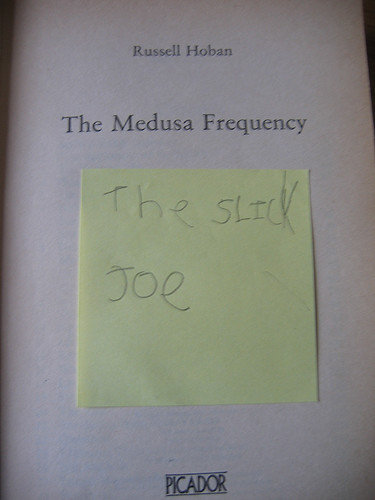
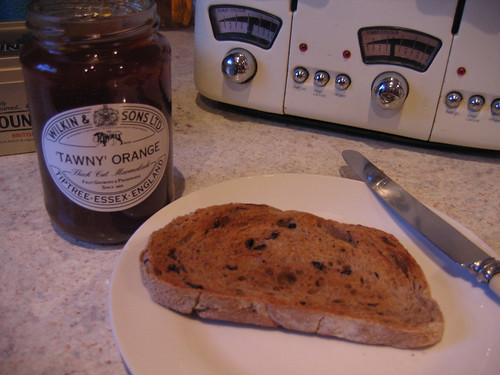
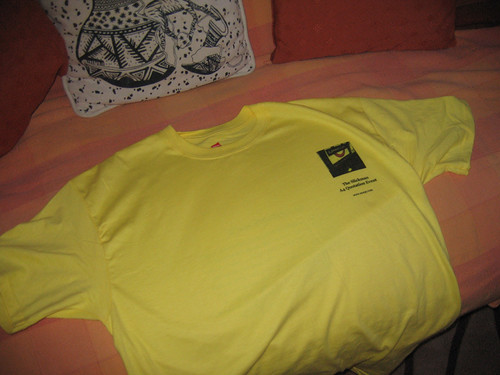
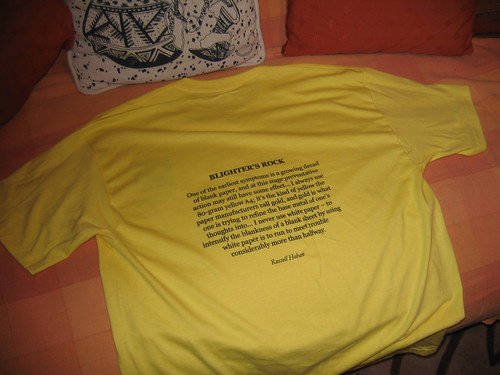

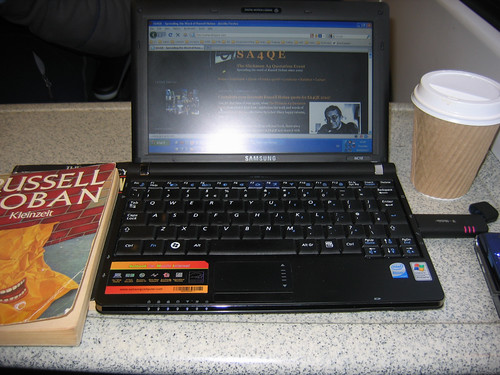
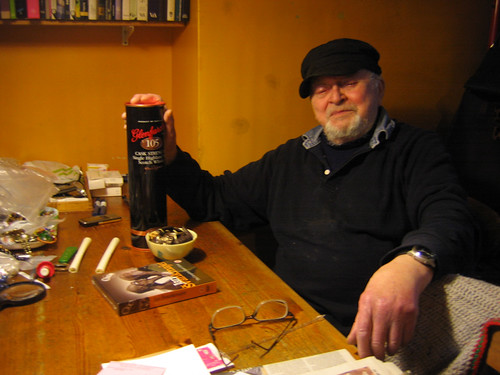
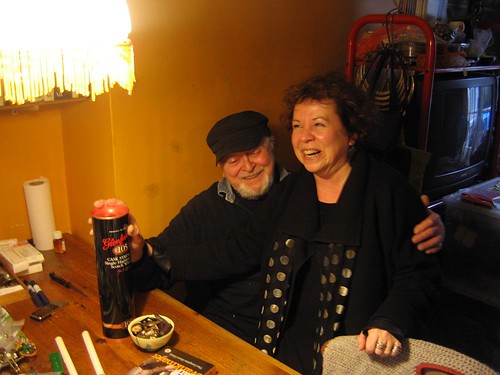

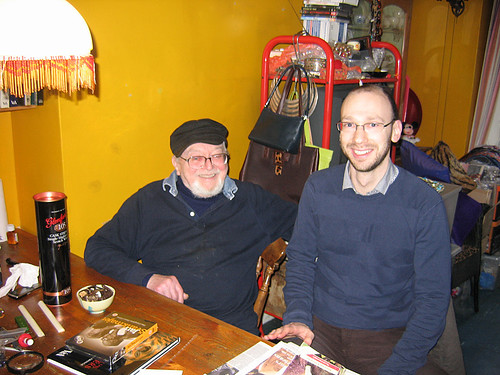
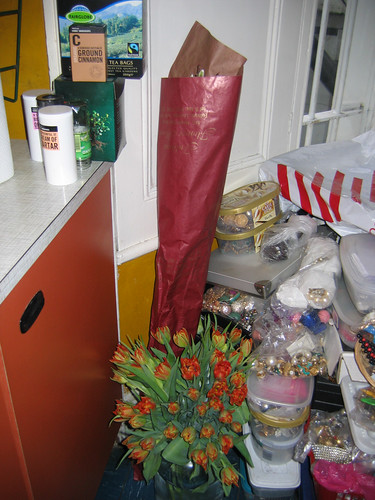
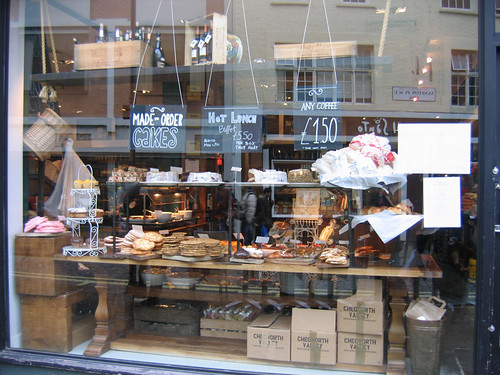

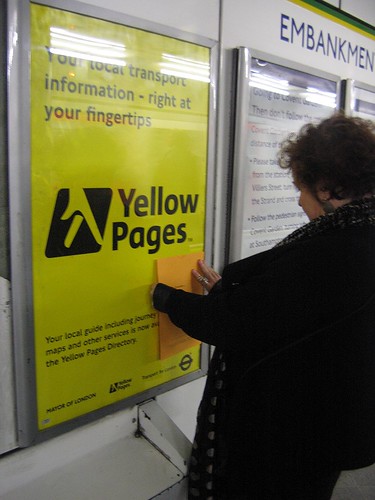

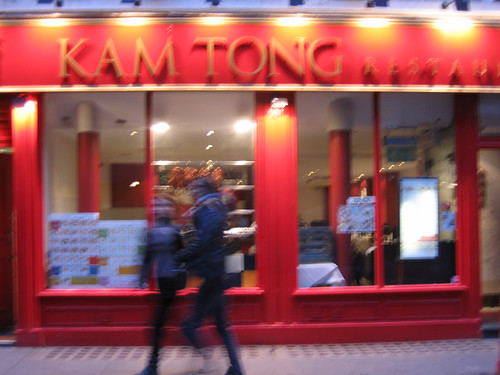
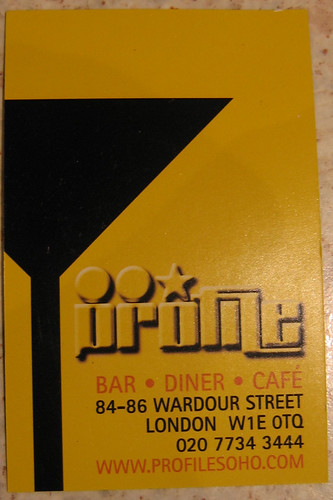

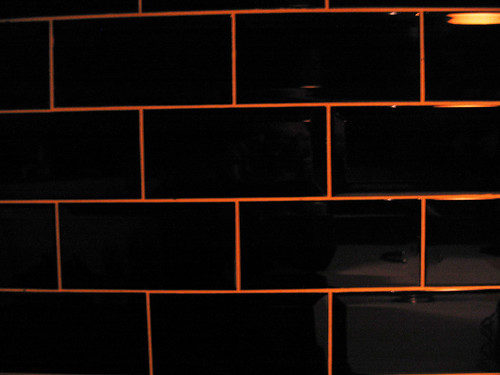

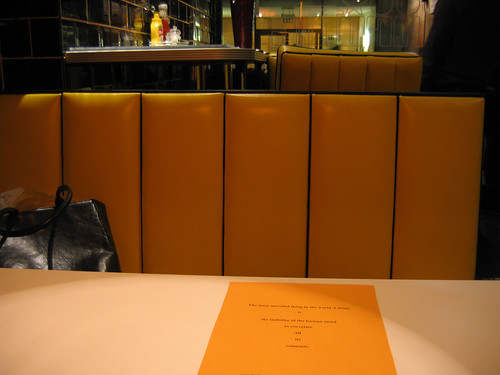
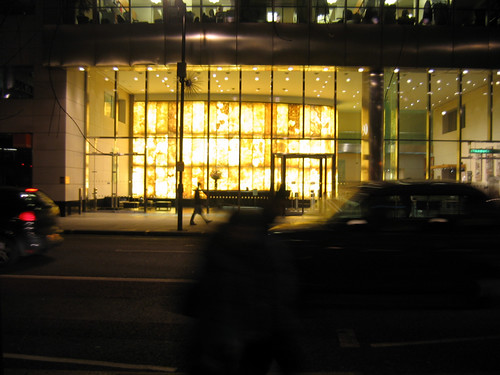

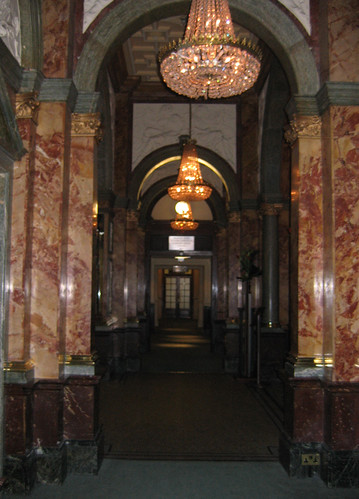
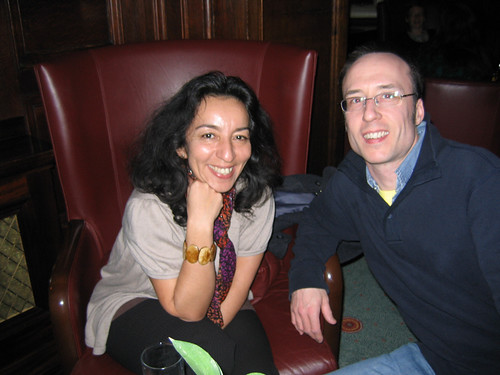
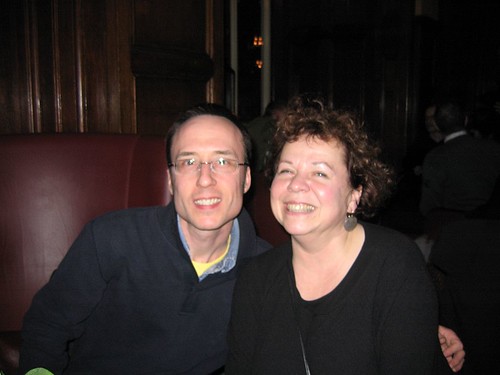
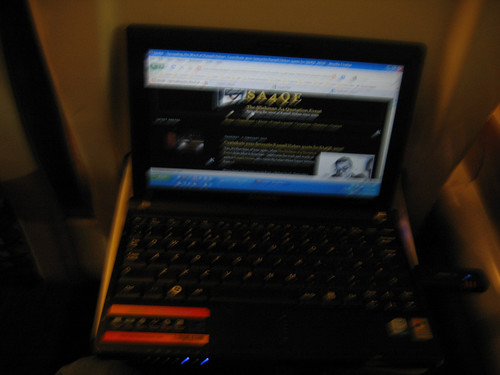
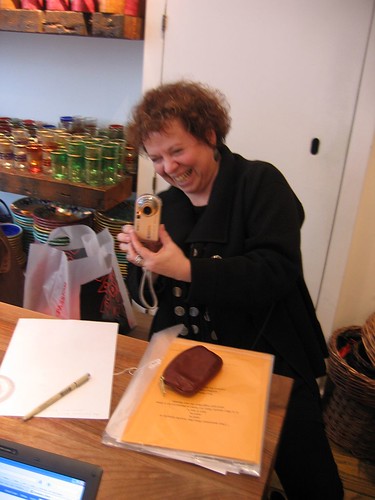



 HUO: What about your own maps? Do you have a collection? Gilbert and George talked about the huge collection they have of maps, do you collect maps?
HUO: What about your own maps? Do you have a collection? Gilbert and George talked about the huge collection they have of maps, do you collect maps?

 On 1 March 2012 Walker Books published Russell Hoban's final young-adult book Soonchild, with amazing illustrations by Alexis Deacon. Read a lovely review in the Guardian, see some exclusive spreads from inside the book and get more details and a text extract at the Head of Orpheus website. Walker tweeted photos of Russ and Alexis at their offices in January 2011.
On 1 March 2012 Walker Books published Russell Hoban's final young-adult book Soonchild, with amazing illustrations by Alexis Deacon. Read a lovely review in the Guardian, see some exclusive spreads from inside the book and get more details and a text extract at the Head of Orpheus website. Walker tweeted photos of Russ and Alexis at their offices in January 2011.
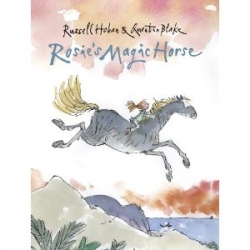 Also, on 4 October 2012 Walker published a beautiful new children's book. Rosie's Magic Horse is illustrated by the legendary Quentin Blake (with whom Russ had formerly collaborated on Trouble on Thunder Mountain, among other titles) and tells the story of a little girl and her collection of ice-lolly sticks, which dream of being a horse.
Also, on 4 October 2012 Walker published a beautiful new children's book. Rosie's Magic Horse is illustrated by the legendary Quentin Blake (with whom Russ had formerly collaborated on Trouble on Thunder Mountain, among other titles) and tells the story of a little girl and her collection of ice-lolly sticks, which dream of being a horse.
 On 4 February 2012 the Slickman A4 Quotation Event celebrated 10 years of sharing Russell Hoban quotes, with many fans across the world posting their favourites in public places both real and virtual. This site was updated daily between 4 February and 10 March 2012 with these quotes. See all 2012 quotes
On 4 February 2012 the Slickman A4 Quotation Event celebrated 10 years of sharing Russell Hoban quotes, with many fans across the world posting their favourites in public places both real and virtual. This site was updated daily between 4 February and 10 March 2012 with these quotes. See all 2012 quotes Russell Hoban's last novel Angelica Lost and Found was published in November 2010 and is available from Amazon and all good bookshops. There were good reviews of the book in the Guardian and Independent and an excellent interview with Russell Hoban in the Scotsman, as well as a revealing audio interview at Tim Haigh Reads Books.
Russell Hoban's last novel Angelica Lost and Found was published in November 2010 and is available from Amazon and all good bookshops. There were good reviews of the book in the Guardian and Independent and an excellent interview with Russell Hoban in the Scotsman, as well as a revealing audio interview at Tim Haigh Reads Books. The London restaurant Gaby's Deli, which is mentioned in Russell Hoban's books The Bat Tattoo and Linger Awhile, is under threat. The landlords want to close it and, reportedly, replace it with a chain restaurant. Give their Facebook page a like or sign their petition.
The London restaurant Gaby's Deli, which is mentioned in Russell Hoban's books The Bat Tattoo and Linger Awhile, is under threat. The landlords want to close it and, reportedly, replace it with a chain restaurant. Give their Facebook page a like or sign their petition. In 2005 the first international convention for Russell Hoban fans took place in London, and was marked by the publication of a fantastic 48-page booklet featuring exclusive contributions from innumerable fans and associates including novelist David Mitchell and actress Glenda Jackson. A wonderful memento of the event, it's also a beautiful collector's item and must-have for any Hoban fan. Although in limited supply, copies of the booklet are still available at £6.00 each plus p&p. Order direct from the Russell Hoban Some-Poasyum website.
In 2005 the first international convention for Russell Hoban fans took place in London, and was marked by the publication of a fantastic 48-page booklet featuring exclusive contributions from innumerable fans and associates including novelist David Mitchell and actress Glenda Jackson. A wonderful memento of the event, it's also a beautiful collector's item and must-have for any Hoban fan. Although in limited supply, copies of the booklet are still available at £6.00 each plus p&p. Order direct from the Russell Hoban Some-Poasyum website. Russell Hoban turned 86 on 4 February 2011 and fans celebrated in traditional style by leaving quotes from his books in public places. Browse their quotes here. The Russell Hoban community group The Kraken sent Russ a birthday gift of The Kraken Rum. Read a report about this at the Fantastic Reads blog.
Russell Hoban turned 86 on 4 February 2011 and fans celebrated in traditional style by leaving quotes from his books in public places. Browse their quotes here. The Russell Hoban community group The Kraken sent Russ a birthday gift of The Kraken Rum. Read a report about this at the Fantastic Reads blog. To celebrate 30 years in print of Russell Hoban's most famous novel Riddley Walker, SA4QE broke with its February tradition and conducted an extraordinary SA4QE on 5 November 2010 in which participants shared their favourite quotes from the book. This site was updated throughout November 2010 with the quotes submitted.
To celebrate 30 years in print of Russell Hoban's most famous novel Riddley Walker, SA4QE broke with its February tradition and conducted an extraordinary SA4QE on 5 November 2010 in which participants shared their favourite quotes from the book. This site was updated throughout November 2010 with the quotes submitted.